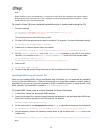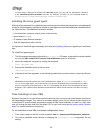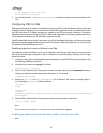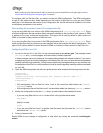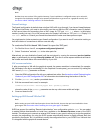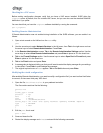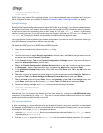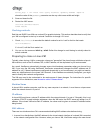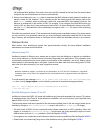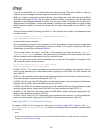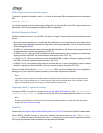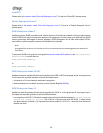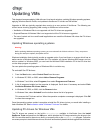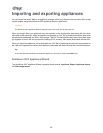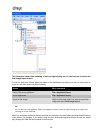
29
VM a different MAC address. As a result, when the new VM is started for the first time, the network does
recognize the new VM and does not come up automatically.
2. Some Linux distributions use udev rules to remember the MAC address of each network interface, and
persist a name for that interface. This is intended so that the same physical NIC always maps to the
same eth<n> interface, which is particularly useful with removable NICs (like laptops). However, this
behavior is problematic in the context of VMs. For example, if you configure two virtual NICs when you
install a VM, and then shut it down and remove the first NIC, on reboot XenCenter shows just one NIC,
but calls it eth0. Meanwhile the VM is deliberately forcing this to be eth1. The result is that networking
does not work.
If the VM uses persistent names, Citrix recommends disabling these rules before cloning. If for some reason
you do not want to turn persistent names off, you must reconfigure networking inside the VM (in the usual
way). However, the information shown in XenCenter will not match the addresses actually in your network.
Release Notes
Most modern Linux distributions support Xen paravirtualization directly, but have different installation
mechanisms and some kernel limitations.
Debian Lenny 5.0
XenServer support for Debian Lenny makes use of support from the distribution to perform an installation
into a virtual machine, in a similar manner to the other supported Linux distributions. This provides a more
customizable configuration and native support for automation of the installation, and so on. Making use of
these features is documented later in this guide. However this does mean that some configuration of VNC
may have to be done manually if you want a graphical console.
Note:
Network installation support is provided by the distribution so HTTP and FTP installation is supported.
Installation from a CD or DVD is also supported. Only 32-bit Debian Lenny is supported due to the upstream
limitations.
To avoid receiving the message There is no public key available for the following key
IDs when running apt-get update, run the following command to download the appropriate key:
wget -O - http://updates.vmd.citrix.com/XenServer/5.6/GPG-KEY \
| sudo apt-key add -
Red Hat Enterprise Linux 4.5 to 4.8
XenServer includes the RHEL 4.8 kernel with additional bug fixes and expanded Xen support. This kernel
is installed with the Citrix Tools for Virtual Machines installation, but is not included if you install Red Hat's
default RHEL 4.5 to 4.7 installations.
The following issues have been reported to Red Hat and are already fixed in the Xen kernel (which can be
installed by using the /mnt/Linux/install.sh script in the built-in xs-tools.iso CD image):
• The Xen kernel in RHEL 4.8 can occasionally enter tickless mode when an RCU is pending. When this
triggers, it is usually in synchronize_kernel() which means the guest essentially hangs until some
external event (such as a SysRQ) releases it (Red Hat Bugzilla 427998)
• Live migration can occasionally crash the kernel under low memory conditions (Red Hat Bugzilla 249867)
• Guest kernel can occasionally hang due to other XenStore activity (Red Hat Bugzilla 250381)



